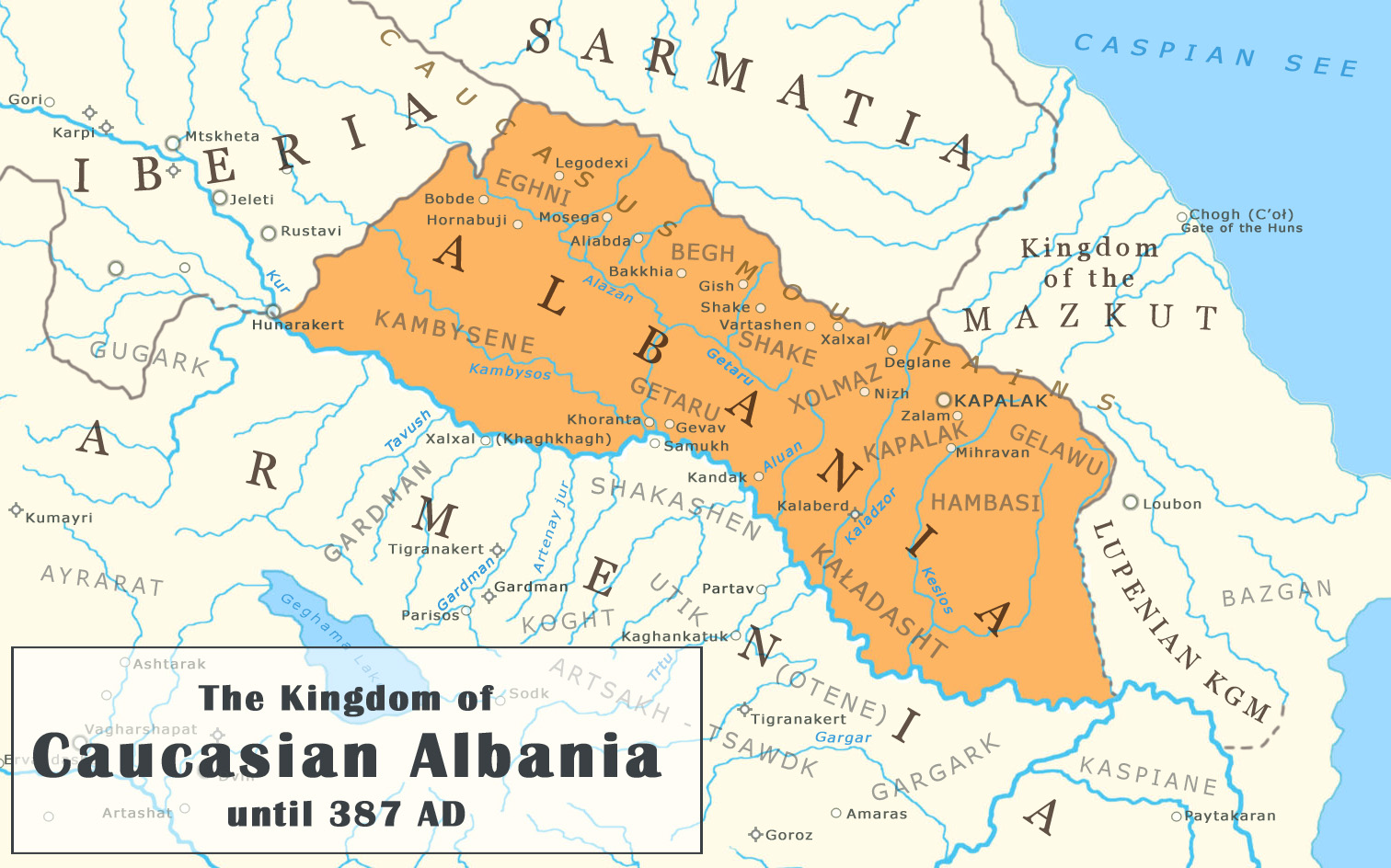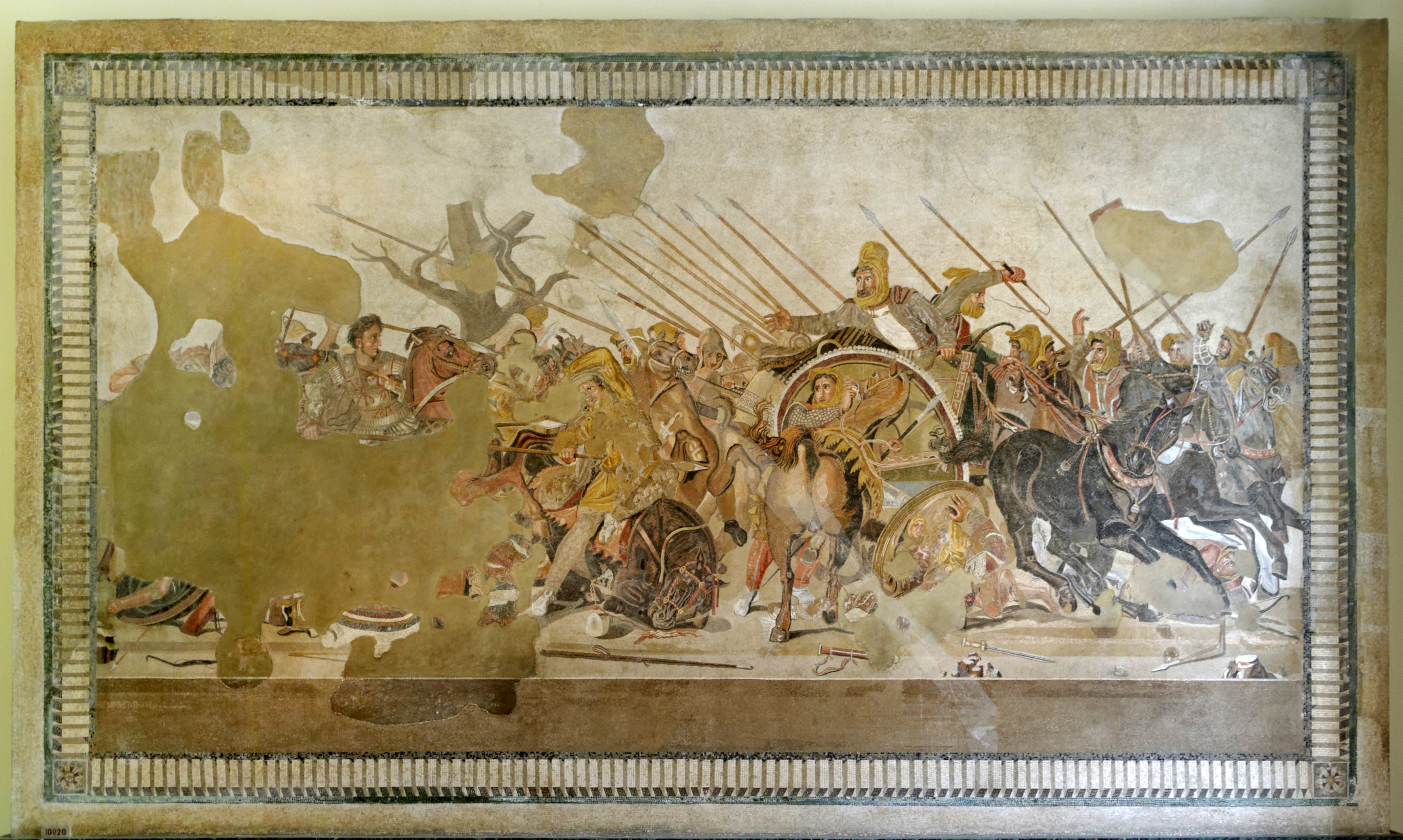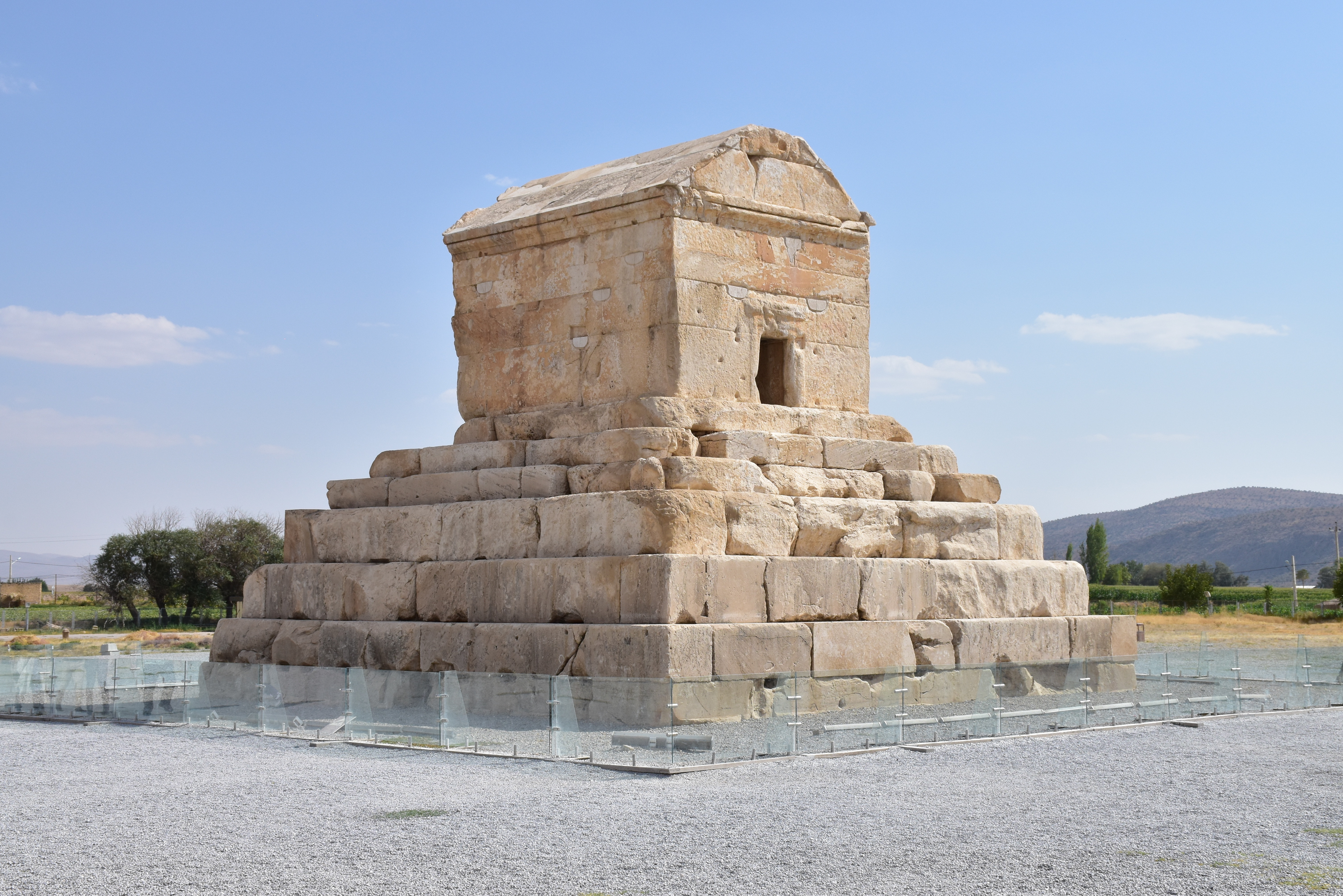|
Media Atropatene
Atropatene (; ; ), also known as Media Atropatene, was an ancient Iranian kingdom established in by the Persian satrap Atropates (). The kingdom, centered in present-day Azerbaijan region in northwestern Iran, was ruled by Atropates' descendants until the early 1st-century AD, when the Parthian Arsacid dynasty supplanted them. It was conquered by the Sasanians in 226, and turned into a province governed by a '' marzban'' ("margrave"). Atropatene was the only Iranian region to remain under Zoroastrian authority from the Achaemenids to the Arab conquest without interruption, aside from being briefly ruled by the Macedonian king Alexander the Great (). The Old Persian name Ātṛpātakāna is the direct ancestor of the name of the historic Azerbaijan region in Iran. Name According to Strabo, the name of Atropatene derived from the name of Atropates, the commander of the Achaemenid Empire. As he writes in his book “Geography”: "Media is divided into two parts. One par ... [...More Info...] [...Related Items...] OR: [Wikipedia] [Google] [Baidu] |
Ancient History
Ancient history is a time period from the History of writing, beginning of writing and recorded human history through late antiquity. The span of recorded history is roughly 5,000 years, beginning with the development of Sumerian language, Sumerian cuneiform script. Ancient history covers all continents inhabited by humans in the period 3000 BCAD 500, ending with the Early Muslim conquests, expansion of Islam in late antiquity. The three-age system periodises ancient history into the Stone Age, the Bronze Age, and the Iron Age, with recorded history generally considered to begin with the Bronze Age. The start and end of the three ages vary between world regions. In many regions the Bronze Age is generally considered to begin a few centuries prior to 3000 BC, while the end of the Iron Age varies from the early first millennium BC in some regions to the late first millennium AD in others. During the time period of ancient history, the world population was Exponential growth, e ... [...More Info...] [...Related Items...] OR: [Wikipedia] [Google] [Baidu] |
Achaemenids
The Achaemenid dynasty ( ; ; ; ) was a royal house that ruled the Achaemenid Empire, which eventually stretched from Egypt and Thrace in the west to Central Asia and the Indus Valley in the east. Origins The history of the Achaemenid dynasty is mainly known through Greek historians, such as Herodotus, Thucydides, and Xenophon. Additional sources include the Hebrew Bible, other Jewish religious texts, and native Iranian sources. According to Herodotus, the Achaemenids were a clan of the Pasargadae tribe:These were the leading tribes, on which all the other Persians were dependent, namely the Pasargadae, Maraphians, and Maspioi. Of these, the Pasargadae are the most noble and include the family of Achaemenids, the Kings of Persia, who are descendants of Perseus.Darius the Great, in an effort to establish his legitimacy, later traced his genealogy to Achaemenes, Persian "". His son was given as Teispes, and from him came in turn Ariaramnes, Arsames, and Hystaspes. How ... [...More Info...] [...Related Items...] OR: [Wikipedia] [Google] [Baidu] |
Sakasene
Sakasena{{clarify, date=October 2020 (Armenian: Շակաշեն - ''Shakashen'', Greek: Σακασηνήν - ''Sakasena''; from Persian ''Saka-anaayana'' - "inhabited territory of the Saks") is a historical region on the territory of modern Azerbaijan. The former core of the 7th - 6th century BCE of the Scythian kingdom of Ishkuz. It got its name from the tribes of the Scythians (Saks in the Eastern tradition), who later entered the tribal union of the Caucasian Albanians. At the end of the 6th - beginning of the 5th century BCE it was part of the satrapy Media under the Achaemenid Empire. At the beginning of the 2nd century BCE it was annexed to Greater Armenia, becoming the Gavar (district) of the Nahanga (province) of Utic. In the division of Great Armenia in 387, it went to the Caucasian Albania, which was, under the treaty, subordinate to the Sassanids. It was located South of the middle course of the Kura, in the area of modern Ganja. Description It is assumed tha ... [...More Info...] [...Related Items...] OR: [Wikipedia] [Google] [Baidu] |
Caucasian Albanians
Caucasian Albania is a modern exonym for a former state located in ancient times in the Caucasus, mostly in what is now Azerbaijan (where both of its capitals were located). The modern endonyms for the area are ''Aghwank'' and ''Aluank'', among the Udi people, who regard themselves as descended from the inhabitants of Caucasian Albania. However, its original endonym is unknown. The name Albania is derived from the Ancient Greek name and Latin , created from Greek sources that incorrectly translated the Armenian language. The prefix "Caucasian" is used to avoid confusion with Albania in the Balkans, which has no geographical or historical connections to Caucasian Albania. Little is known of the region's prehistory, including the origins of Caucasian Albania as a geographical and/or ethnolinguistic concept. In the 1st century BC and the 1st century AD, the area south of the Greater Caucasus and north of the Lesser Caucasus was divided between Caucasian Albania in the east, C ... [...More Info...] [...Related Items...] OR: [Wikipedia] [Google] [Baidu] |
Medes
The Medes were an Iron Age Iranian peoples, Iranian people who spoke the Median language and who inhabited an area known as Media (region), Media between western Iran, western and northern Iran. Around the 11th century BC, they occupied the mountainous region of northwestern Iran and the northeastern and eastern region of Mesopotamia in the vicinity of Ecbatana (present-day Hamadan). Their consolidation in Iran is believed to have occurred during the 8th century BC. In the 7th century BC, all of western Iran and some other territories were under Median rule, but their precise geographic extent remains unknown. Although widely recognized as playing an important role in the history of the ancient Near East, the Medes left no written records to reconstruct their history. Knowledge of the Medes comes only from foreign sources such as the Assyrians, Babylonians, Armenians and Ancient Greece, Greeks, as well as a few Iranian archaeological sites, which are believed to have been occu ... [...More Info...] [...Related Items...] OR: [Wikipedia] [Google] [Baidu] |
Darius III
Darius III ( ; ; – 330 BC) was the thirteenth and last Achaemenid King of Kings of Persia, reigning from 336 BC to his death in 330 BC. Contrary to his predecessor Artaxerxes IV Arses, Darius was a distant member of the Achaemenid dynasty. During his early career, he was reportedly an obscure figure among his peers and first rose to prominence during the Cadusian expedition of Artaxerxes III in the 350s BC. As a reward for his bravery, he was given the Satrapy of Armenia. Around 340 BC, he was placed in charge of the royal "postal service," a high-ranking position. In 338 BC, Artaxerxes III met an abrupt end after being poisoned by the court eunuch and chiliarch (''hazahrapatish'') Bagoas, who installed Artaxerxes' youngest son Arses on the throne. He only reigned for a few years, until Bagoas had him poisoned as well. Darius was subsequently installed on the throne and soon forced Bagoas to drink his poison after discovering that the eunuch had planned to poison him as w ... [...More Info...] [...Related Items...] OR: [Wikipedia] [Google] [Baidu] |
Achaemenid
The Achaemenid Empire or Achaemenian Empire, also known as the Persian Empire or First Persian Empire (; , , ), was an Iranian empire founded by Cyrus the Great of the Achaemenid dynasty in 550 BC. Based in modern-day Iran, it was the largest empire by that point in history, spanning a total of . The empire spanned from the Balkans and Egypt in the west, most of West Asia, the majority of Central Asia to the northeast, and the Indus Valley of South Asia to the southeast. Around the 7th century BC, the region of Persis in the southwestern portion of the Iranian plateau was settled by the Persians. From Persis, Cyrus rose and defeated the Median Empire as well as Lydia and the Neo-Babylonian Empire, marking the establishment of a new imperial polity under the Achaemenid dynasty. In the modern era, the Achaemenid Empire has been recognised for its imposition of a successful model of centralised bureaucratic administration, its multicultural policy, building complex infrast ... [...More Info...] [...Related Items...] OR: [Wikipedia] [Google] [Baidu] |
Battle Of Gaugamela
The Battle of Gaugamela ( ; ), also called the Battle of Arbela (), took place in 331 BC between the forces of the Ancient Macedonian army, Army of Macedon under Alexander the Great and the Achaemenid Army, Persian Army under Darius III, King Darius III. It was the second and final battle between the two kings, and is considered to be the final blow to the Achaemenid Empire, resulting in its complete conquest by Alexander. The fighting took place in Gaugamela, a village on the banks of the river Khazir River, Bumodus, north of Arbela (modern-day Erbil, in Iraqi Kurdistan). Despite being heavily outnumbered, the Army of Macedon emerged victorious due to the employment of superior tactics and the clever usage of light infantry forces. It was a decisive victory for the League of Corinth, and it led to the fall of the Achaemenid Empire and of Darius III. Background In November 333 BC, Darius III, King Darius III had lost the Battle of Issus to Alexander the Great, which res ... [...More Info...] [...Related Items...] OR: [Wikipedia] [Google] [Baidu] |
Transcaucasia 2nd BC
The South Caucasus, also known as Transcaucasia or the Transcaucasus, is a geographical region on the border of Eastern Europe and West Asia, straddling the southern Caucasus Mountains. The South Caucasus roughly corresponds to modern Armenia, Georgia, and Azerbaijan, which are sometimes collectively known as the Caucasian States. The total area of these countries measures about . The South Caucasus and the North Caucasus together comprise the larger Caucasus geographical region that divides Eurasia. The South Caucasus is a dynamic and complex region where the three countries have pursued distinct geopolitical pathways. Geography The South Caucasus spans the southern portion of the Caucasus Mountains and their lowlands, straddling the border between the continents of Europe and Asia, and extending southwards from the southern part of the Main Caucasian Range of southwestern Russia to the Turkish and Armenian borders, and from the Black Sea in the west to the Caspian Sea coast ... [...More Info...] [...Related Items...] OR: [Wikipedia] [Google] [Baidu] |
Ecbatana
Ecbatana () was an ancient city, the capital of the Median kingdom, and the first capital in History of Iran, Iranian history. It later became the summer capital of the Achaemenid Empire, Achaemenid and Parthian Empire, Parthian empires.Nardo, Don. "Ecbatana." ''The Greenhaven Encyclopedia of Ancient Mesopotamia'', edited by Robert B. Kebric, Greenhaven Press, 2007, pp. 97-98. ''Gale In Context: World History'', link.gale.com/apps/doc/CX3205100129/WHIC?u=wylrc_uwyoming&sid=summon&xid=e9682d3c. Accessed 20 Nov. 2022. It was also an important city during the Seleucid Empire, Seleucid and Sasanian Empire, Sasanian empires. It is believed that Ecbatana is located in the Zagros Mountains, the east of central Mesopotamia, on Hagmatana Hill (Tappe-ye Hagmatāna). Ecbatana's strategic location and resources probably made it a popular site even before the 1st millennium BC. Along with Athens in Greece, Rome in Italy and Susa in Iran, Ecbatana is one of the few ancient cities in the world th ... [...More Info...] [...Related Items...] OR: [Wikipedia] [Google] [Baidu] |
Achaemenid Empire
The Achaemenid Empire or Achaemenian Empire, also known as the Persian Empire or First Persian Empire (; , , ), was an Iranian peoples, Iranian empire founded by Cyrus the Great of the Achaemenid dynasty in 550 BC. Based in modern-day Iran, it was the List of largest empires#Timeline of largest empires to date, largest empire by that point in history, spanning a total of . The empire spanned from the Balkans and ancient Egypt, Egypt in the west, most of West Asia, the majority of Central Asia to the northeast, and the Indus Basin, Indus Valley of South Asia to the southeast. Around the 7th century BC, the region of Persis in the southwestern portion of the Iranian plateau was settled by the Persians. From Persis, Cyrus rose and defeated the Medes, Median Empire as well as Lydia and the Neo-Babylonian Empire, marking the establishment of a new imperial polity under the Achaemenid dynasty. In the modern era, the Achaemenid Empire has been recognised for its imposition of a succ ... [...More Info...] [...Related Items...] OR: [Wikipedia] [Google] [Baidu] |
Strabo
Strabo''Strabo'' (meaning "squinty", as in strabismus) was a term employed by the Romans for anyone whose eyes were distorted or deformed. The father of Pompey was called "Gnaeus Pompeius Strabo, Pompeius Strabo". A native of Sicily so clear-sighted that he could see things at great distance as if they were nearby was also called "Strabo". (; ''Strábōn''; 64 or 63 BC) was an ancient Greece, ancient Greek geographer who lived in Anatolia, Asia Minor during the transitional period of the Roman Republic into the Roman Empire. He is best known for his work ''Geographica'', which presented a descriptive history of people and places from different regions of the world known during his lifetime. Additionally, Strabo authored historical works, but only fragments and quotations of these survive in the writings of other authors. Early life Strabo was born to an affluent family from Amasya, Amaseia in Kingdom of Pontus, Pontus in around 64BC. His family had been involved in politics s ... [...More Info...] [...Related Items...] OR: [Wikipedia] [Google] [Baidu] |










